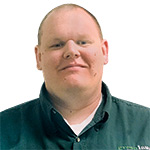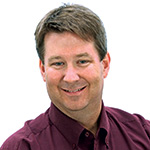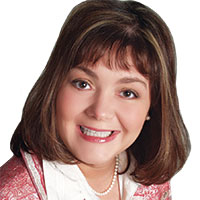GPS and routing solutions allow PMPs to add several stops a day, while cutting fuel costs.
Pest management professionals (PMPs) who use GPS and routing technology say they’d be lost without it — which is why those who are not yet onboard would be wise to reconsider.
“This is something you do not want to run a business without,” says Brian Leto, IT manager, Green Pest Solutions, West Chester, Pa. “The investment you make on the solutions will be returned and then some with more efficient labor, fuel cost savings, and improved vehicle maintenance and safety.”
More and more PMPs are turning to GPS tools because they help save money on gas and other vehicle expenses, and accurately monitor driver behavior. PMPs who use routing software are able to reduce the drive time for their technicians. In fact, some companies have rolled back the number of technicians on the road. (See “Features That Fuel Productivity.”)
The technology works well at Dallas-based ABC Home & Commercial Services — maybe a little too well, says company President Dennis Jenkins. “We gained 40 percent more in route production,” he says. “That was actually too much and we dialed it back, but the days are shorter with more production than before.”
Michael Blankinship, service manager for Inspect-All Services in Conyers, Ga., agrees GPS and routing solutions are worth the investment. With 48 vehicles in its fleet and 38 technicians, it makes managing Inspect-All’s service calls easier. “The routing aspect helps with placing more stops and production per day,” he says.
Many companies have GPS devices hardwired into their vehicles. This way, they can more accurately keep track of vehicles and monitor driver behavior because neither drivers nor car thieves can easily remove the devices.
“It helps improve your bottom line by observing habits of employees who may not be efficient in their routes and keeping track of two of your biggest expenses: your vehicles and fuel,” explains Kurt Scherzinger, Pest Management Professional (PMP) columnist and vice president of operations, Scherzinger Termite & Pest Control, Cincinnati.
For many pest management companies, their fleets are their biggest assets. “Owners need to protect themselves and their businesses, and GPS can provide useful data in the event of a collision or liability issue,” says David Frederick, service technology manager for Niles, Ill.-based Smithereen Pest Management Services. (See “The Impact on Insurance.”)
Getting onboard
If using GPS and routing solutions is so wonderful, why don’t more PMPs do it? Well, the technology requires time and money to implement and maintain.
“If PMPs are trying to convince their teams to buy into this, then they need to convey why it’s a good idea, what outcomes they expect, and whom will be affected by it,” says Pam Blauvelt, vice president of operations, Griffin Pest Solutions, Kalamazoo, Mich. “Their reasons may include fleet reduction, increased safety for their drivers, and a better ability to meet specific customer requests. Getting the most buy-in, and ROI from, these systems requires frequent, in-depth colleague conversations.”
Typically, it doesn’t take long for PMPs to see measurable returns on GPS/routing investments.
“It’s pretty direct when you look at route production, and time and gas savings,” Jenkins says. “We used this technology to open up a 7 a.m. time slot and now do not need to have the office open. All but three of our 90 technicians have a Monday-through-Friday schedule.”
PMPs see increased efficiencies thanks to the ability to plan routes for their employees’ appointments ahead of time. “They also will be able to see where there is room for added stops and/or if the driving habits of technicians need to be improved to help prevent accidents and violations,” Scherzinger says.
The technology also can make owners aware of costly driving habits they can then reduce or eliminate, Frederick says. “GPS units can help highlight unproductive employees who could be costing the business money,” he says. “In today’s world, the technology is necessary.”
The key is to compare data from one time period to another. That way, PMPs can measure the change that comes with using GPS and routing solutions.
Working with vendors
GPS and routing tools may seem daunting to PMPs who do not yet use the technology. They may wonder how to select a vendor and choose hardware and software that’s easy to use. In addition, before the software can collect the data that PMPs can analyze to determine efficiencies and cost savings, parameters must be set within the program so reports can be easily generated.
To lessen the learning curve, Steve Lum, president of Slug-A-Bug in Milbourne, Fla., suggests: “You have to have somebody in charge and responsible for GPS/routing. Take the time to set it up upfront.”
The designated staff member won’t have to work on the project full time forever. Over time, the process takes less effort because the reports already are set up and simply need to be generated on a regular basis.
“If you do your research ahead of time on a system that will fit your company’s needs and desires, you shouldn’t have many issues,” Scherzinger agrees.
Research should entail determining which factors you want the software to measure, then asking vendors how they will provide what you need.
“The most important factor is whether it will fit the needs of your organization,” Scherzinger adds.
See how flexible each vendor will be when providing the reports and product features you need to run your company as efficiently as possible.
Also, make sure the routing software is in constant contact with your database and makes changes in real time, Jenkins says. “Search for a vendor that will pull this all together so you don’t have to have one software ‘talk’ to another,” he says.
Blauvelt agrees. She suggests asking the vendor up front whether the GPS and routing software can communicate with your existing software, so you can easily pass data back and forth between the systems.
Price may be a factor, but don’t let that deter you, advises Kevin Lemasters, ACE, president, EnviroPest, Loveland, Colo. “With technology advancing so quickly, it is much more price competitive now.”
Lum prefers to work with vendors who ask questions about his company. “They stop and listen, and take time to ask us whether their product is going to be a good fit for us,” he says. “And they open up our eyes a little bit as to what they can provide that maybe we didn’t even know.”
Keep in mind your staff is going to have to learn how to use the system, too. Blauvelt says owners should ask themselves whether their team is ready for the changes and challenges that come with a technology rollout.
Still, the best way to learn what to expect from a newly installed software system is to try it out.
That’s what Tim Whitt, president of Pied Piper Pest, Termite & Lawn Services in Eufaula, Okla., did. “We installed it in one vehicle first, and then monitored that progress for 30 days, just to see what the value was,” he recalls. “We could see that, within a very short period of time, it added value for our company.”
Many vendors provide references and the names of “power users” who can share their expertise and answer questions honestly. Make sure to get such a list, and use it.
“The National Pest Management Association (NPMA) and state associations make it easy to find PMPs who are using a vendor’s product,” Lum says. He specifically asks vendors to provide the names of their customers in the pest management industry, picks somebody he either knows or is in a similar market to his but not a direct competitor, and reaches out for feedback.
Worthwhile investment
GPS and routing solutions can offer many benefits. If you’re still unsure, simply ask vendors and users to show you.
“The technology easily pays for itself,” Lum says. “If you’re not getting your money’s worth out of it, then you’re just not using it consistently.”
The software enables Lum to prove to doubting customers that his technician showed up as promised to service an account.
Scherzinger agrees, adding, “It has allowed us to ensure we are spending the amount of time needed at our customers’ homes to provide an exceptional service and deliver them the service for which they are paying.”
Increased efficiency is a benefit PMPs who use the solutions mention often.
“We are able to run more routes with fewer technicians, vehicles, gas, and equipment,” says Blauvelt. “We also are able to honor more specific requests for same- and next-day services, which helps us bring on new business.”
Blauvelt adds the software’s turn-by-turn voice navigation eliminates the need for drivers to look at maps and enhances their safety on the road.
“We have seen a decrease in labor costs, as there is less wasted time during the day,” Leto says. “We were able to find opportunities to get extra production stops completed during the day vs. estimating the amount of drive time.”
Routing software gives Frederick’s company the ability to manage a call center, where a customer service representative can confidently schedule a job without having to call the technicians and managers to check availability.
Blankinship says routes are more fuel-efficient. “With tighter routes, we have experienced fewer oil changes,” he says.
Lemasters agrees, saying his company generates driving reports that are used to coach technicians on driving behaviors — such as hard braking, sudden acceleration and extended idling — that may lengthen the longevity of the vehicles.
For Pied Piper Pest, Termite & Lawn Services, GPS/routing solutions also have changed driving behavior for the better. “There are so many more positives to the technology than negatives,” Whitt says.
[RELATED: GPS and routing features fuel productivity // GPS and routing systems: Tips from the pros]
You can reach Managing Editor Diane Sofranec at dsofranec@northcoastmedia.net or 216-706-3793.




Leave A Comment